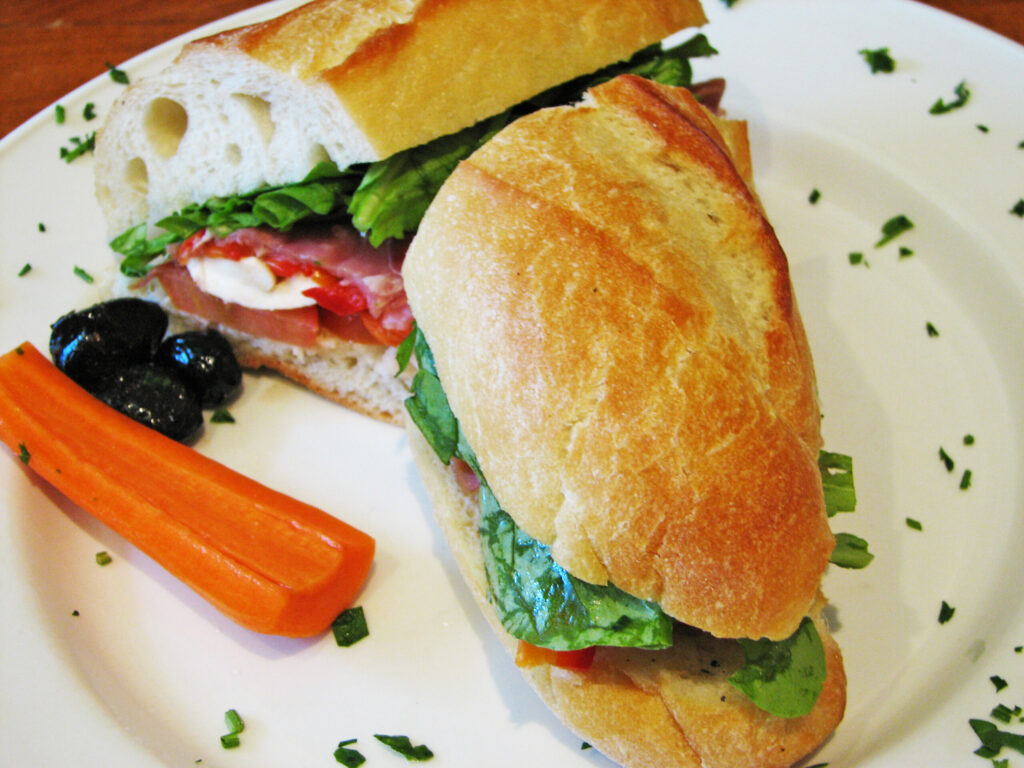The Art of Italian Sandwiches
Italy is a country known for its incredible culinary diversity, and sandwiches are no exception. While many cultures have their own take on sandwiches, Italy elevates them to an art form with fresh, high-quality ingredients, artisanal bread, and simple yet flavorful fillings. From crispy panini to soft and fragrant focaccia and hearty regional sandwiches, Italian bread-based creations tell the story of a nation deeply rooted in food traditions.
Let’s dive into the world of panini, focacce, and Italian sandwiches, exploring the different types of bread, classic fillings, regional variations, and the perfect sauces and vegetables that make these sandwiches a delight.
Panini: The Quintessential Italian Sandwich
Panini (singular: panino) are Italy’s answer to the perfect sandwich. Unlike the Americanized version of the term (which refers to a grilled sandwich), in Italy, a panino simply means a sandwich made with fresh bread and various fillings.
Popular Breads for Panini
The bread plays a crucial role in an authentic Italian panino. Here are some of the most commonly used types:
- Ciabatta – A rustic, airy bread with a crisp crust, perfect for warm, pressed sandwiches.
- Rosetta – A hollow, crunchy roll popular in Rome, often filled with cured meats and cheese.
- Filone – A long, crusty bread similar to a baguette but softer inside.
- Tartaruga – A soft, slightly chewy bread with a distinct pattern, great for cold panini.
Classic Panini Fillings
Italian panini are all about balance—quality over quantity. Some of the most beloved panini fillings include:
- Prosciutto e Mozzarella – Thin slices of prosciutto crudo (raw ham) paired with fresh mozzarella and basil.
- Speck e Brie – Smoked ham from northern Italy combined with creamy Brie cheese.
- Bresaola e Rucola – Air-dried beef (bresaola), arugula, and Parmigiano-Reggiano.
- Caprese – A simple yet flavorful mix of mozzarella, tomato, and basil, drizzled with olive oil.
- Porchetta – Slices of herb-roasted pork, often served in central Italy.
Focaccia: Italy’s Soft and Flavorful Bread
Focaccia is a beloved Italian flatbread, often used as the base for sandwiches or enjoyed on its own. This bread is rich in olive oil, giving it a soft, fluffy interior and a slightly crispy exterior.
Types of Focaccia
- Focaccia Genovese – The classic Ligurian focaccia, golden and slightly crunchy with salt and olive oil.
- Focaccia Barese – A softer, tomato-topped version from Puglia.
- Focaccia al Rosmarino – Infused with rosemary and sea salt, perfect for savory fillings.
Focaccia-Based Sandwiches
Unlike panini, focaccia sandwiches are not typically pressed but are deliciously soft and rich. Some common combinations include:
- Focaccia al Tonno – Focaccia filled with tuna, tomatoes, capers, and arugula.
- Focaccia con Mortadella – A simple yet classic pairing of mortadella (Bologna’s famous sausage) and creamy stracciatella cheese.
- Focaccia con Verdure Grigliate – A vegetarian delight featuring grilled zucchini, eggplant, and bell peppers.
- Focaccia con Salmone – Smoked salmon, mascarpone, and dill for a delicate yet luxurious sandwich.
Regional Italian Sandwiches: A Bite of Local Flavors
Each region in Italy has its own signature sandwich, deeply rooted in local traditions.
Tramezzino (Veneto & Piedmont)
A soft, crustless triangular sandwich filled with a variety of ingredients like tuna and artichokes, prosciutto and cheese, or egg salad. Served cold, they are a staple in Italian cafés.
Lampredotto (Tuscany)
A Florentine street food specialty, lampredotto is made from slow-cooked cow’s stomach, served in a soft bun and drizzled with green sauce. A true delicacy for adventurous eaters.
Piadina (Emilia-Romagna)
A thin, griddled flatbread sandwich, often filled with squacquerone cheese, arugula, and prosciutto di Parma.
Michetta (Lombardy)
A Milanese specialty featuring a hollow, crunchy roll filled with cured meats, cheese, or pickled vegetables.
The Role of Sauces and Condiments
Italian sandwiches are never overloaded with sauces, as the quality of the ingredients speaks for itself. However, a few traditional condiments add depth to the flavors.
- Pesto Genovese – A fresh basil-based sauce, perfect with mozzarella and tomatoes.
- Salsa Verde – A tangy green sauce made from parsley, capers, garlic, and olive oil, often paired with meats.
- Truffle Mayo – A luxurious spread that complements prosciutto and cheese.
- Aioli – A garlic-infused mayonnaise, enhancing grilled vegetables and seafood fillings.
Vegetables: The Perfect Complement
Vegetables play a key role in Italian sandwiches, adding freshness and texture. Some popular choices include:
- Grilled Eggplant & Zucchini – Lightly charred for extra flavor.
- Sundried Tomatoes – Intensely sweet and tangy.
- Arugula & Radicchio – Adds a peppery and slightly bitter bite.
- Caramelized Onions – A sweet, savory addition to meat-based panini.
- Pickled Vegetables (Giardiniera) – A tangy mix of carrots, cauliflower, and peppers.
Final Thoughts: The Magic of Italian Sandwiches
What makes Italian panini, focacce, and sandwiches so special? It’s the perfect harmony between artisanal bread, quality fillings, and simple yet effective condiments. Whether you’re indulging in a warm, pressed panino, a soft and fluffy focaccia sandwich, or a unique regional specialty, each bite tells the story of Italy’s passion for food.
So next time you crave an authentic Italian sandwich, remember—simplicity, freshness, and balance are the keys to perfection. Buon appetito!


